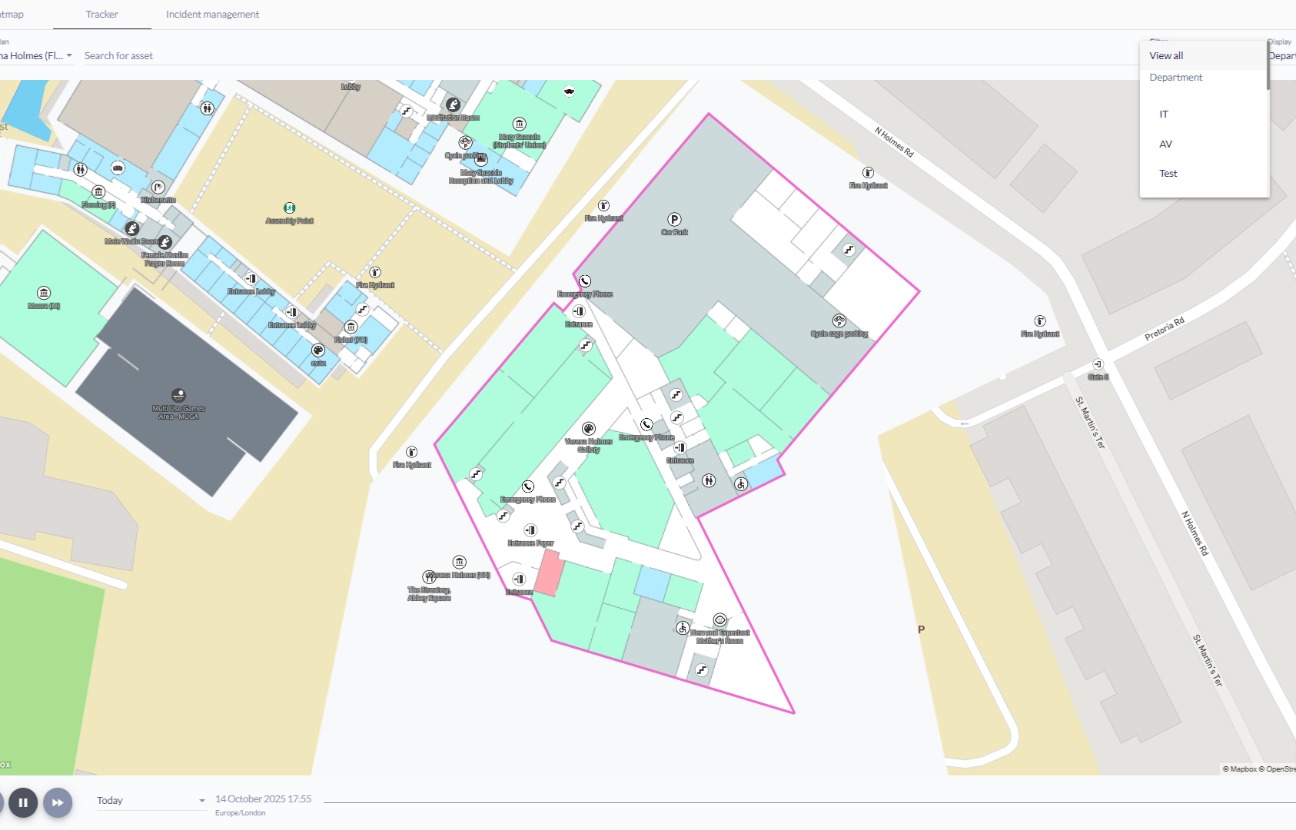Mapping the Real World for the Digital Age

When James Cobb worked in the events industry, he noticed a peculiar irony.
“It always struck me that for major events like music festivals, a year of meticulous planning ended the moment the gates opened,” he recalls. “From that point on, organisers had to operate reactively, without real-time visibility of what was happening across a site.”
That frustration became the seed for Crowd Connected, the British spatial intelligence company Cobb founded in 2013. More than a decade later, his vision of bringing real-time indoor location data to dynamic environments has earned the company a place on the UK Fast Growth Index 2025, recognising its exceptional revenue growth and innovation in spatial analytics.
What began as a niche tool for live events has evolved into a platform that helps hospitals, universities, and workplaces make sense of how people and assets move through their spaces. Cobb describes it as giving the physical world a digital nervous system—one that can sense, learn, and adapt.
From Festival Fields to Smart Hospitals
Crowd Connected’s first major test came at London’s Wireless Festival in 2014, funded by Innovate UK and promoted by Live Nation.
The event served as a chaotic, real-world laboratory: tens of thousands of people moving unpredictably, phone signals bouncing off temporary structures, and organisers desperate for real-time visibility. Those early lessons shaped a system designed to work anywhere—without the laborious calibration that plagues most indoor positioning systems (IPS).
“Event environments demand systems that are fast to deploy, require no calibration, and simply work from day one,” Cobb says. “Those same qualities are critical for large, complex buildings.”
Crowd Connected's tech is now deployed in hospitals, university campuses, and corporate workplaces, where location intelligence improves everything from wayfinding and patient flow to space utilisation.
Solving the Indoor Positioning Calibration Problem
Indoor positioning has long been one of technology’s toughest challenges. GPS fails indoors, Wi-Fi signals fluctuate, and many systems rely on manual calibration, mapping each building metre by metre.
Crowd Connected’s breakthrough is its patented, self-calibrating, machine learning-based platform.
"It continuously optimises accuracy for each phone and every environment,” Cobb explains.
Its wireless, multipurpose sensors are lightweight and battery-powered, with multi-year life. A single, fast installation can provide blue-dot navigation, asset tracking, personnel location, and people counting—the sort of functionality that makes smart buildings scalable and cost-efficient.
Hardware-Light, Software-Smart Spatial Intelligence
Unlike many indoor mapping solutions that depend on Wi-Fi infrastructure, Crowd Connected has built a hardware overlay that operates independently.
“Sensors are small, battery-powered, and typically installed with self-adhesive pads,” Cobb explains. “A handful of gateways link the network to the cloud, placed wherever convenient.”
Each sensor serves multiple roles—broadcasting Bluetooth signals, locating tagged equipment, and estimating room-level occupancy. Data travels hop-by-hop until it reaches a gateway, giving building operators a live feed of space usage.
The system is continuously adaptive. “Our software uses machine learning to adjust for layout changes and environmental shifts, maintaining high accuracy without manual intervention,” Cobb says.
Seeing Movement, Not Just Maps
The technology’s flexibility makes it suitable for a variety of environments.
“Music festivals, including Coachella, use our software to power live crowd heatmaps and deliver targeted safety messaging,” Cobb highlights. “Major exhibitions use it for indoor navigation and footfall analytics. Conferences use it to measure session attendance seamlessly, without scanning every attendee in and out.”
In healthcare, Crowd Connected’s indoor location analytics help hospitals guide patients and locate essential medical equipment. Universities use it to optimise space and teaching resources. “We see the biggest growth in smart buildings—healthcare, education, and workplace environments—where spatial intelligence is becoming part of the digital core,” Cobb adds.
Recognition and Rapid Growth
Crowd Connected’s inclusion in the UK Fast Growth Index 2025 marks a milestone for a company whose technology has quietly become essential infrastructure.
“Our rapid revenue growth over the last three years is the clearest signal of product-market fit,” Cobb says.
He quotes venture capitalist Marc Andreessen: “You can always feel product/market fit when it’s happening—customers are buying as fast as you can make it.”
For Cobb, this recognition confirms that spatial intelligence has moved from futuristic concept to mainstream business necessity.
Making the Physical World Machine-Readable
Cobb’s ambition reaches far beyond crowd analytics. He believes spatial data is the missing layer of digital transformation.
“Digital transformation has redefined how we work, trade, and communicate—but only within the parts of the world we’ve digitised: documents, transactions, media,” he says. “The physical world often remains invisible to digital systems and AI.”
Spatial intelligence, he argues, changes that. “It gives technology the ability to perceive movement, context, and flow—so that digital systems can finally understand what’s happening in the real world, in real time.”
Static maps, Cobb notes, show where things are but not how they move or interact. “That’s the next frontier,” he says. “Our vision is to create the dynamic layer between the physical and digital worlds—a living map of movement.”
By exposing real-time spatial data through APIs and MCP servers, Crowd Connected aims to make the built environment machine-readable—allowing AI to interpret and even predict what happens in physical space.
“It’s how the physical world becomes machine-readable,” Cobb says, “and how the next generation of intelligent systems will understand and shape the spaces we live and work in.”
In an era where the digital and physical increasingly converge, Cobb’s vision of a “living map of movement” feels less like science fiction and more like an inevitability.
“It’s how technology will finally learn to see the real world,” he says.